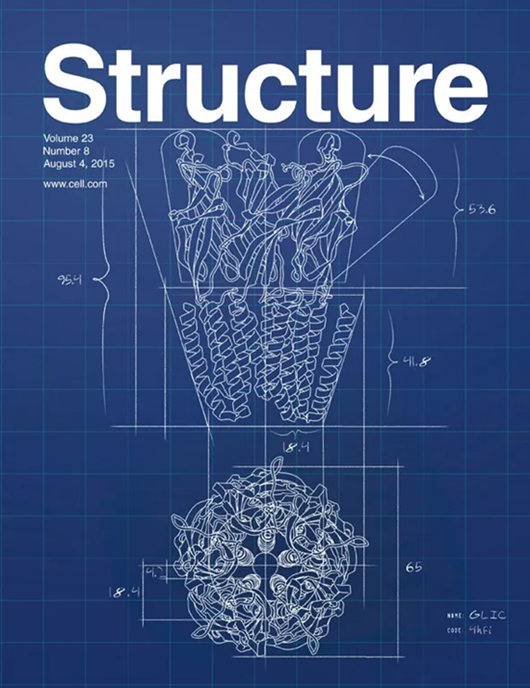扩大昆虫防御素范围
IF 4.4
2区 生物学
Q2 BIOCHEMISTRY & MOLECULAR BIOLOGY
引用次数: 0
摘要
在本期《结构》杂志上,Walker 等人1测定了最近从一种刺蝽毒液中发现的防御素 Pp19 的核磁共振结构。这种肽具有类似α-防御素的结构,以前从未在昆虫中观察到过。哺乳动物的α防御素通常具有抗菌作用,而Pp19则不同,它具有杀虫活性。本文章由计算机程序翻译,如有差异,请以英文原文为准。
Expanding the insect defensin landscape
In this issue of Structure, Walker et al.1 determined the NMR structure of a recently discovered defensin, Pp19, from the venom of an assassin bug. This peptide adopts an α-defensin-like structure, which had not been observed in insects before. Unlike mammalian α-defensins, which are generally antimicrobial, Pp19 has insecticidal activity.
求助全文
通过发布文献求助,成功后即可免费获取论文全文。
去求助
来源期刊

Structure
生物-生化与分子生物学
CiteScore
8.90
自引率
1.80%
发文量
155
审稿时长
3-8 weeks
期刊介绍:
Structure aims to publish papers of exceptional interest in the field of structural biology. The journal strives to be essential reading for structural biologists, as well as biologists and biochemists that are interested in macromolecular structure and function. Structure strongly encourages the submission of manuscripts that present structural and molecular insights into biological function and mechanism. Other reports that address fundamental questions in structural biology, such as structure-based examinations of protein evolution, folding, and/or design, will also be considered. We will consider the application of any method, experimental or computational, at high or low resolution, to conduct structural investigations, as long as the method is appropriate for the biological, functional, and mechanistic question(s) being addressed. Likewise, reports describing single-molecule analysis of biological mechanisms are welcome.
In general, the editors encourage submission of experimental structural studies that are enriched by an analysis of structure-activity relationships and will not consider studies that solely report structural information unless the structure or analysis is of exceptional and broad interest. Studies reporting only homology models, de novo models, or molecular dynamics simulations are also discouraged unless the models are informed by or validated by novel experimental data; rationalization of a large body of existing experimental evidence and making testable predictions based on a model or simulation is often not considered sufficient.
 求助内容:
求助内容: 应助结果提醒方式:
应助结果提醒方式:


